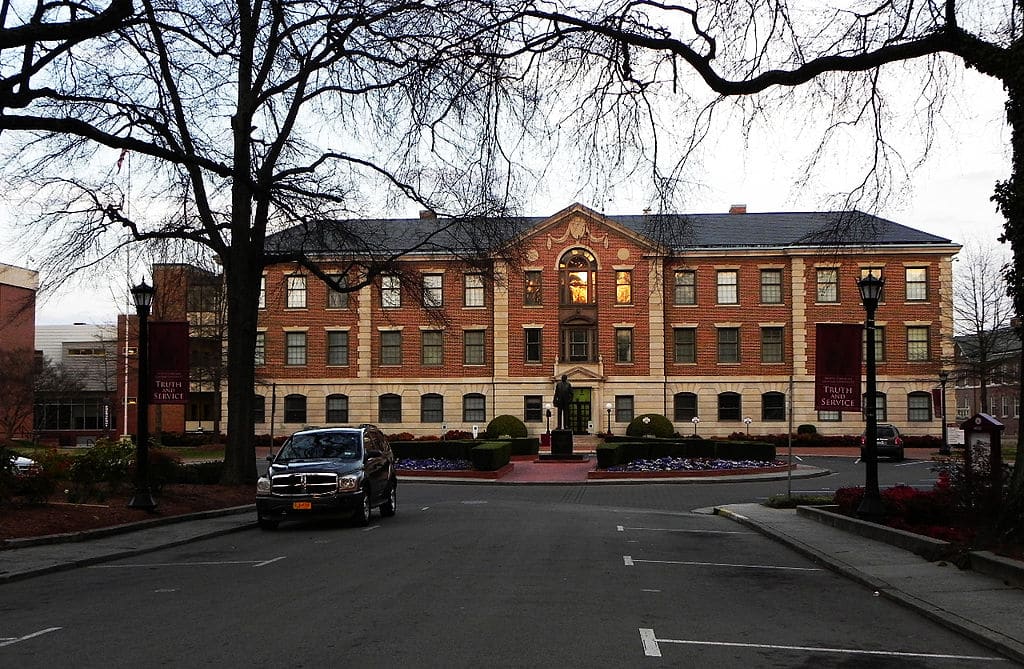Scaling AI Fluency for Marketing Teams: How ASU Leads with Innovation and Intent
See how ASU is leading AI fluency for marketing teams through leadership buy-in, innovation challenges, and custom tools that drive real, campus-wide impact.
Marketing Strategies
One of the core objectives of education marketing is setting yourself apart from the competition. Today, we talk to Ayana Hernandez of North Carolina Central University to see how they’re using their distinctiveness as a selling point.
North Carolina Central University is a historically black college (now a university).
Historically black colleges and universities, HBCU’s, as they’ve come to be called, played a vital role in higher education in the United States, allowing a discriminated racial minority access to a quality higher education.
In many ways, access to higher education through HBCU’s really changed the game for black Americans giving them opportunities for jobs and positions reserved for those with advanced training.
While this legacy is inspiring, it is also challenging for education marketers.
As an HBCU, North Carolina Central University simply cannot be the right choice for everyone.
And HBCU’s aren’t the only ones in this category.
As with HBCU’s, faith-based schools are singularly focused on a particular educational method and perspective that might not fit each and every student.
In a similar way, single-sex schools limit students to those of the same sex.
Program-oriented schools will only fit those students who’re interested in the featured program, such as art or business, thereby limiting their audience.
So what’s a mission-oriented school like North Carolina Central University supposed to do to be successful at marketing?

Source: Wikimedia Commons
Here are the insights that my co-host, Troy Singer, and I learned on our podcast while talking with Ayana Hernandez, Associate Vice Chancellor for University Relations.
At the beginning of our conversation, we were able to hear Ayana’s inspiring family history with HBCU’s.
Black colleges and universities have been part of my life for my entire life. My grandmother attended a very small HBCU of all women, Bennett College, for a few years. My parents were both products of HBCU’s.
When it was time for me to select a college or university to continue my education, I looked at historically black colleges and universities. I wound up attending and graduating from Spelman College in Atlanta, Georgia. I had an amazing experience where everything that I was told about HBCUs I found to be true.
For Ayana, working as a part of the administration of North Carolina Central University is a “full circle moment.”
For HBCU’s and other mission-oriented institutions, marketing is challenging at its core simply because it’s not aimed at everyone.
In this case, your brand reach is not determined by your marketing skills and channels.
Your reach is limited by your mission itself.
First of all, Ayana reminded us that whether you’re marketing for an HBCU or not, “all of our institutions are mission driven in some way, shape, or form.”
In other words, you’re not alone!
And at the core of your mission, are the graduates that matriculate through your campus. Those stories that you witness and that you’re able to share [are also at the core]. And being one who markets for this institution, it’s really coming to know the fabric of what makes you distinct, what makes you unique.
Why are students selecting you, when they in many cases have many other options to attend a college or university? It’s really [about] connecting the legacy of the institution to present day.
Our institution happened to be founded as the first publicly supported liberal arts institution for African-Americans in the nation. Today, we not only have Jazz Studies, but I’m actually right now sitting in our school of law, which was founded at a time when African-Americans in this area and in the state were not admitted to other law schools.
Whether you serve first-generation college students, or whether you serve a commuter student population, I think all of us are very unique in fulfilling that mission.
Ayana and her team at North Carolina Central really lean into what makes them unique.
And that’s really your greatest competitive advantage as an education marketer.
The final insight from this wonderful conversation I want to share here, is how to harvest the stories and connections that show off your institution’s unique qualities.
According to Ayana, this is not a complicated process.
But it does require intentional effort to get out and be a part of your campus life.
One way I’ve learned to market this great institution is being really intrusive. When I say “intrusive,” I mean I have gone to a student Honors Society inductions. I’ve gone to a fashion show our textile and design students usually have where they show off the work they’ve been doing throughout the semester. It’s football games. It’s athletics.
But it’s also those other events that really help you learn exactly what you’re marketing.
To be able to really market anything, you have to be inside of it… listening to it. Get out and literally be part of the campus.
I know all of us are so busy in our job responsibilities. But it could be that after five o’clock, when a student invites you to a program or something, make sure you go and show up and give them feedback afterwards. They will so appreciate it. And it helps you do your job just a little bit better.
Like all of our blog post reviews of The Higher Ed Marketer podcasts, there’s so much more to learn in the podcasts themselves.
Listen to our interview with Ayana Hernandez to get even more insights into:
You’re in luck! We’ve curated 25 awesome ideas inspired by top higher ed institutions across the country and put them in one handy guide: 25 Ideas for Great Admissions Content.

Get inspired.
Get enrollment results.
Get 25 Ideas for Great Admissions Content.
Download your copy today!
Featured image via nccu.edu
Subscribe to The Higher Ed Marketer podcast today!